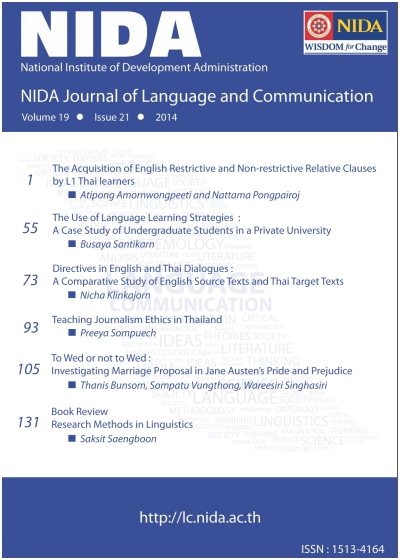The Use of Language Learning Strategies: A Case Study of Undergraduate Students in a Private University
Keywords:
language learning strategies, undergraduate students, private universityAbstract
The objectives of this research were to investigate the language learning strategy use of undergraduate students at Bangkok University, compare their language learning strategies use classified by gender, experience of studying English, and subjects, and study the relationship between their learning strategy use and English language ability. The data were collected from 400 students enrolling in EN 013 and EN 311 in the first semester of 2012 by Oxford’s Strategies Inventory of Language Learning (SILL) questionnaire. The data were analyzed by means, standard deviations, t-tests, and Pearson Correlation. The findings revealed that the overall use of language learning strategies was at a moderate level. In addition, students with different gender and experience of studying English did not use language learning strategies differently at the significance level of .05. However, statistically significant differences were found in overall strategy use and in all categories between students taking two English courses. That is, the overall language learning strategies use of the students studying EN 013 was higher than those studying EN 311. It was also found that high proficient students tended to use fewer learning strategies while low proficient students tended to use more learning strategies.Downloads
How to Cite
Issue
Section
License
By submitting a manuscript, the author transfers the copyright for the article to School of Language and Communication, National Institute of Development Administration (NIDA), if and when the manuscript is accepted for publication. Though the journal is an open-access, reproduction of any material published in NIDA Journal of Language and Communication for non-personal and/or commercial purpose requires a written permission from School of Language and Communication, National Institute of Development Administration (NIDA).






